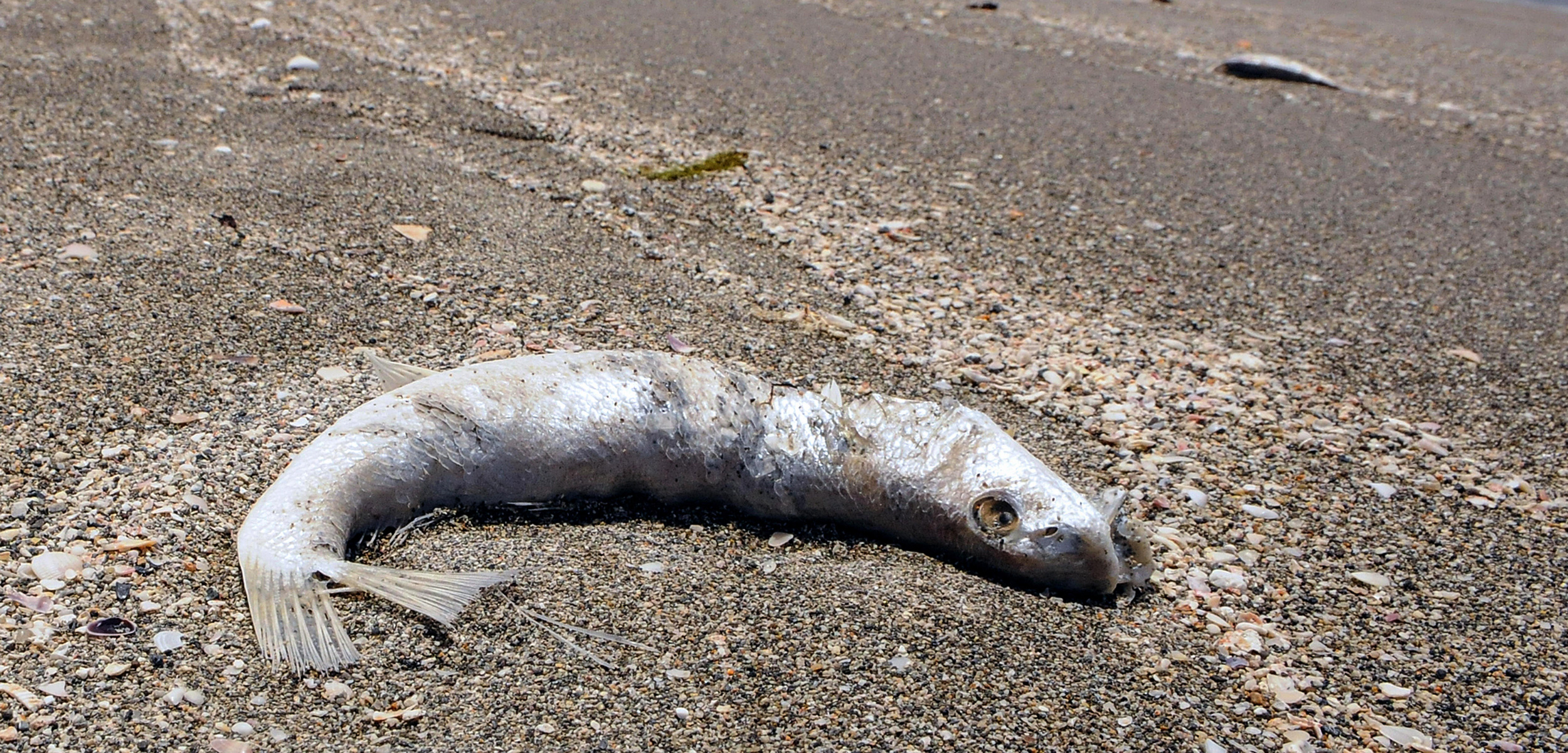All Quiet Under the Algal Bloom
A network of listening stations in Sarasota Bay, Florida, is letting scientists hear how red tides affect marine life.
Article body copy
Underwater, Florida’s Sarasota Bay is a cacophony of frying bacon, clacking typewriters, knocking wood. But in August 2018, an unrelenting algal bloom known as a red tide swept across the bay. The algae produced a neurotoxin that stifled the bay’s snapping shrimp, toad fish, bottlenose dolphins, manatees, and other noisy denizens. Within days of the bloom, the water hushed.
Right away, scientists picked up on the sudden quiet, thanks to two solar-powered recording devices. These were the first in a network of passive acoustic listening stations—PALS, for short—set up in 2017 to eavesdrop on the bay’s undersea comings and goings. First conceived to monitor dolphin acoustics, the PALS network is enabling scientists to explore all manner of effects on the marine soundscape.
Now, a new study shows how the PALS can help scientists rapidly detect ecological changes during harmful algal blooms.
Athena Rycyk, an acoustic ecologist at New College of Florida who co-led the study, compares a healthy marine ecosystem to an orchestra. When something disrupts the ecosystem, causing the composition of species to shift, the melody changes. Within days of the red tide’s arrival, the orchestra had shrunk to “a few lone musicians.”
The recordings taken during the red tide echo a speaker’s buzz after a song ends: so quiet that, when played for others, the researchers have to assure them that the speakers are working. “There’s a couple [of] fish that go bloop!, and that’s it,” says Reny Tyson Moore, a behavioral ecologist with the Sarasota Dolphin Research Program and study co-leader.
That silence could mean the fish died, quieted down, or left the bay, says Tyson Moore. But how to tell which?
Recordings taken before, during, and one year after the red tide swept through Sarasota Bay, Florida. Audio courtesy of Loggerhead Instruments, Chicago Zoological Society, and New College of Florida
Consulting ongoing fish surveys, the scientists found that catches of sound-producing fish plummeted by 99 percent during the red tide. That suggests a big die-off, says Tyson Moore.
The culprit behind Florida’s red tides is the alga Karenia brevis. Near-annual blooms release toxins that harm marine animals and linger in the air, causing people on the coast to wheeze and cough. Little is known about what influences a red tide’s timing and severity, and tracking its impacts is expensive, time-consuming, and risky.
“What’s wonderful about these PALS is they’re relatively inexpensive,” says Alexis Fischer, a postdoctoral researcher at Massachusetts’s Woods Hole Oceanographic Institution studying algal blooms with robotic underwater microscopes who was not involved with the research. The stations provide rapid updates, which allow scientists to focus on areas where sound has faded or shifted, she says. “You could have these everywhere.”
Two and a half years after it was silenced, Sarasota Bay has nearly rebounded to its pre-bloom din. Tyson Moore and Rycyk consider their study a proof of concept for the bay’s growing PALS network, now 10 stations strong. They will continue to use the network to establish baseline data, which is crucial for interpreting future changes in the bay. “We’re hopeful that, going forward, we’ll be able to have some predictive power” to better track red tides’ impacts, says Rycyk.

